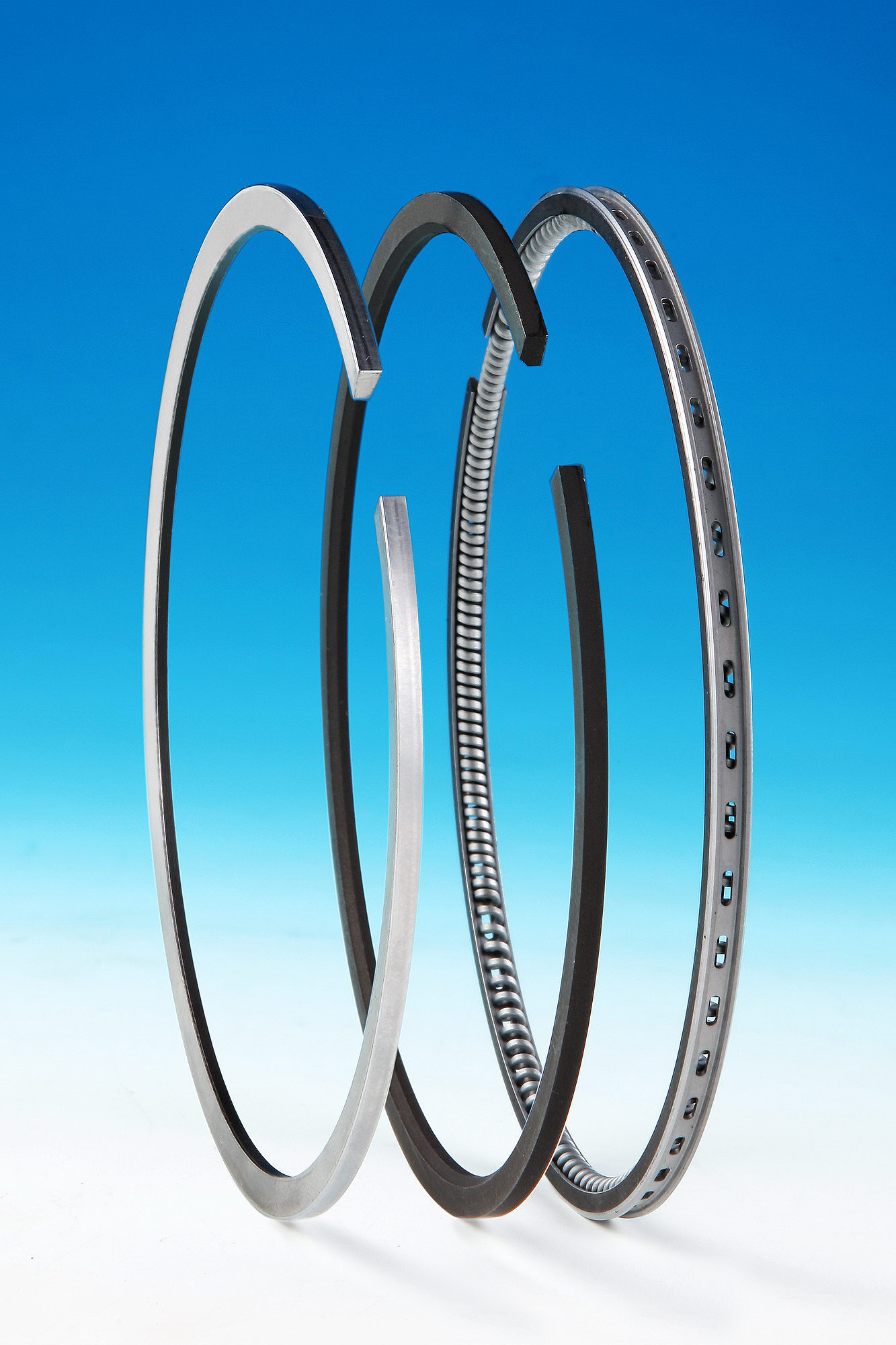Manufacturers design piston rings to meet specific functionality and usability requirements. Consequently, pistons vary in their purpose and can be categorized into three main types. The primary role of a piston is to seal the combustion chamber in both 2-stroke and 4-stroke engines.
Piston rings are a crucial component of the piston. Their number and function are determined by the engine type and its capacity.
For example, a 2-stroke engine has only two piston rings, one for compression and the other, wiper ring. However, the 4-stroke engine has three piston rings. The other ring is the oil scraper ring.

Piston rings are metallic split-type rings that are fitted into the grooves in a piston’s outer diameter. They ensure a good seal is maintained between the cylinder wall and the piston.
Piston rings are most commonly made from fine-grained alloy cast iron. The typical alloys used include nickel, copper, vanadium, chromium, titanium, and molybdenum. Cast iron contains graphite, giving it self-lubricating properties, which reduces friction between the cylinder liners and the rings. The material for piston rings must be more rigid than the cylinder liner to ensure maximum lifespan. The mentioned alloys further strengthen the cast iron.
Some manufacturers also use pressed steel to make piston rings.
Piston rings wear out quickly due to frequent loading conditions and high temperatures. Therefore, they are coated with various materials. Soft substances like graphite, phosphate, and iron oxide are preferred for ring coatings due to their good oil-absorbing qualities, which enhance ring lubrication.
These coatings also prevent ring scuffing, which occurs when metal-to-metal contact happens at high temperatures, similar to welding. Coatings prevent scuffing by eliminating exposed iron, thus avoiding welding-like effects.
There are two basic types of piston rings:
Compression rings are typically found in sets of two to three on a piston, depending on the engine's compression ratio. The second and third rings are often taper-faced to prevent sticking in high-power engines. Counterbored and scraper rings are commonly used for the top and second compression rings. These rings may twist slightly during the suction stroke due to internal forces generated within the engine. During the compression stroke, they move upward with the piston, sealing against the cylinder wall and reducing oil consumption. In the power stroke, combustion pressure straightens the rings, ensuring optimal sealing.
In engines, some oil is splashed onto the cylinder walls by the connecting rod. Excess oil must be scraped off and returned to the oil pan to prevent burning in the combustion chamber, which can lead to increased oil consumption. Effective oil control rings are crucial for cooling, cleaning, and maintaining proper cylinder wall sealing.
Oil control rings come in three main types:
- One Piece Slotted Cast Iron Type: These rings have slots that allow the expander spring to increase pressure against the cylinder wall, improving scraping efficiency.
- One Piece Pressed Steel Type: Primarily used in engines with worn cylinder walls, these rings are made of steel and can seal one side of the groove.
- Three Piece Steel Rail Type With Expander: These rings seal both upward and downward, providing a more effective seal overall.
Piston rings serve four primary functions:
Piston rings maintain airtightness between the cylinder wall and piston, preventing combustion gas leakage during engine operation. This ensures optimal engine power and efficiency, reducing fuel consumption and environmental impact.
Piston rings regulate the amount of lubricating oil that enters the combustion chamber, maintaining a minimal oil layer on the cylinder wall. This prevents oil from burning and ensures proper lubrication without oil entering the combustion chamber.
Piston rings aid in dissipating heat from the piston to the cylinder, managing the high temperatures generated during combustion. Effective heat dissipation helps prevent engine overheating and damage.
Piston rings prevent the piston from making direct and damaging contact with the cylinder wall during its movement. This ensures smooth piston operation and extends engine life by reducing wear and tear.
In conclusion, piston rings come in three main types: counterbored and scraper rings for compression, and oil control rings. These rings serve multiple functions, including sealing combustion gas, controlling lubricating oil in the combustion chamber, facilitating heat conduction, and preventing the piston from contacting the cylinder wall excessively.
Copyright:@2020-2021
Comments Please sign in or sign up to post.
0
0 of 500 characters used